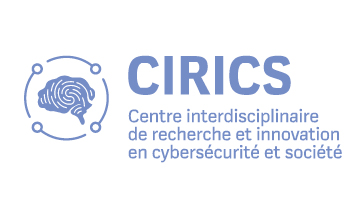
Slide

Centre Interdisciplinaire
de Recherche et d’Innovation
en Cybersécurité et Société
de Recherche et d’Innovation
en Cybersécurité et Société
1.
Agbodoh-Falschau, R. K.; Lamzihri, O.; Gagnon, S.
When Misleading Information Hits: How Canadian Companies React? Article de journal
Dans: Corporate Reputation Review, 2024, ISSN: 13633589 (ISSN), (Publisher: Springer Nature).
Résumé | Liens | BibTeX | Étiquettes: C81, Cybersecurity risk, Disinformation, G34, Governance, K42, M15, Misinformation, Misleading information, Principal component analysis
@article{agbodoh-falschau_when_2024,
title = {When Misleading Information Hits: How Canadian Companies React?},
author = {R. K. Agbodoh-Falschau and O. Lamzihri and S. Gagnon},
url = {https://www.scopus.com/inward/record.uri?eid=2-s2.0-85207355906&doi=10.1057%2fs41299-024-00203-4&partnerID=40&md5=d5f72a1918cee04b8585bad2153ca426},
doi = {10.1057/s41299-024-00203-4},
issn = {13633589 (ISSN)},
year = {2024},
date = {2024-01-01},
journal = {Corporate Reputation Review},
abstract = {The concept of misleading information categorized as misinformation, disinformation, and mal-information among others is receiving much attention, as it is seen to have detrimental consequences on the organizations’ reputation and going concerns. Corporations face more challenges in honing responses to combat these cyber threats as there are still significant differences in the proposed governance solutions and a lack of empirical research investigating the most prevalent ones to fight these growing risks. Grounded on protection motivation theory, empirical evidence, and the data collected from the Statistics Canada Open Sources Database, this paper investigates the appropriateness of governance solutions that corporations contemplate in managing these cybersecurity risks. Our results show that governance solutions related to increasing online presence and customer outreach explained 52% of overall solutions contemplated by corporations to fight these cyber threats. The results also revealed that organizations ranked governance solutions associated with employee training, new increase cybersecurity measures, marketing campaigns, legal action, political advocacy, and reporting to external parties as the most adopted solutions to combat false or misleading information. Overall, our paper contributes to a growing disinformation, misinformation, and mal-information literature in business environments by providing empirical evidence on key governance solutions favored by corporations to combat misleading information. © The Author(s), under exclusive licence to Springer Nature Limited 2024.},
note = {Publisher: Springer Nature},
keywords = {C81, Cybersecurity risk, Disinformation, G34, Governance, K42, M15, Misinformation, Misleading information, Principal component analysis},
pubstate = {published},
tppubtype = {article}
}
The concept of misleading information categorized as misinformation, disinformation, and mal-information among others is receiving much attention, as it is seen to have detrimental consequences on the organizations’ reputation and going concerns. Corporations face more challenges in honing responses to combat these cyber threats as there are still significant differences in the proposed governance solutions and a lack of empirical research investigating the most prevalent ones to fight these growing risks. Grounded on protection motivation theory, empirical evidence, and the data collected from the Statistics Canada Open Sources Database, this paper investigates the appropriateness of governance solutions that corporations contemplate in managing these cybersecurity risks. Our results show that governance solutions related to increasing online presence and customer outreach explained 52% of overall solutions contemplated by corporations to fight these cyber threats. The results also revealed that organizations ranked governance solutions associated with employee training, new increase cybersecurity measures, marketing campaigns, legal action, political advocacy, and reporting to external parties as the most adopted solutions to combat false or misleading information. Overall, our paper contributes to a growing disinformation, misinformation, and mal-information literature in business environments by providing empirical evidence on key governance solutions favored by corporations to combat misleading information. © The Author(s), under exclusive licence to Springer Nature Limited 2024.



